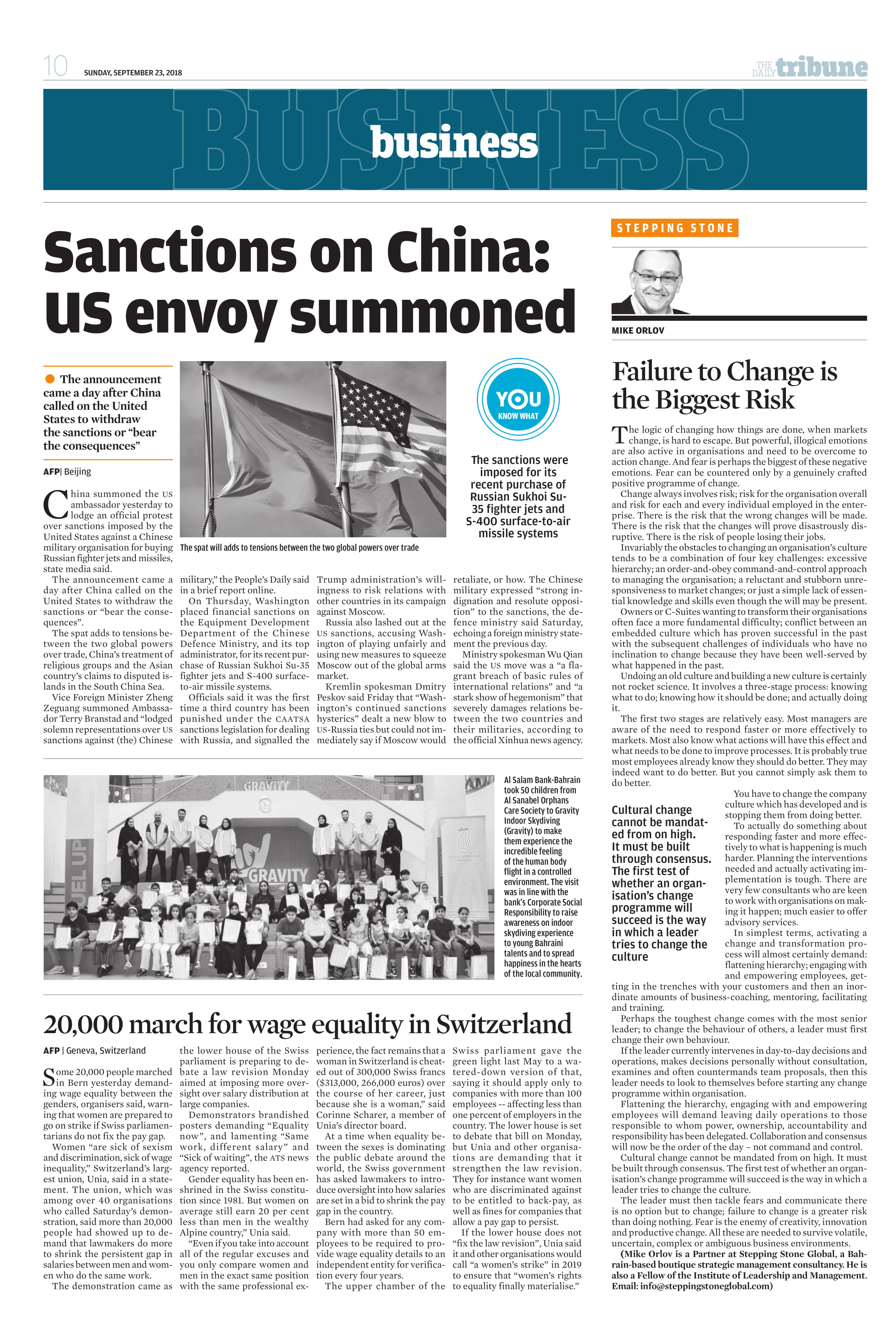Failure to Change is the Biggest Risk
The logic of changing how things are done, when markets change, is hard to escape. But powerful, illogical emotions are also active in organisations and need to be overcome to action change. And fear is perhaps the biggest of these negative emotions. Fear can be countered only by a genuinely crafted positive programme of change.
Change always involves risk; risk for the organisation overall and risk for each and every individual employed in the enterprise. There is the risk that the wrong changes will be made. There is the risk that the changes will prove disastrously disruptive. There is the risk of people losing their jobs.
Invariably the obstacles to changing an organisation’s culture tends to be a combination of four key challenges: excessive hierarchy; an order-and-obey command-and-control approach to managing the organisation; a reluctant and stubborn unresponsiveness to market changes; or just a simple lack of essential knowledge and skills even though the will may be present.
Owners or C-Suites wanting to transform their organisations often face a more fundamental difficulty; conflict between an embedded culture which has proven successful in the past with the subsequent challenges of individuals who have no inclination to change because they have been well-served by what happened in the past.
Undoing an old culture and building a new culture is certainly not rocket science. It involves a three-stage process: knowing what to do; knowing how it should be done; and actually doing it.
The first two stages are relatively easy. Most managers are aware of the need to respond faster or more effectively to markets. Most also know what actions will have this effect and what needs to be done to improve processes. It is probably true most employees already know they should do better. They may indeed want to do better. But you cannot simply ask them to do better.
You have to change the company culture which has developed and is stopping them from doing better.
To actually do something about responding faster and more effectively to what is happening is much harder. Planning the interventions needed and actually activating implementation is tough. There are very few consultants who are keen to work with organisations on making it happen; much easier to offer advisory services.
In simplest terms, activating a change and transformation process will almost certainly demand: flattening hierarchy; engaging with and empowering employees, getting in the trenches with your customers and then an inordinate amounts of business-coaching, mentoring, facilitating and training.
Perhaps the toughest change comes with the most senior leader; to change the behaviour of others, a leader must first change their own behaviour.
If the leader currently intervenes in day-to-day decisions and operations, makes decisions personally without consultation, examines and often countermands team proposals, then this leader needs to look to themselves before starting any change programme within organisation.
Flattening the hierarchy, engaging with and empowering employees will demand leaving daily operations to those responsible to whom power, ownership, accountability and responsibility has been delegated. Collaboration and consensus will now be the order of the day – not command and control.
Cultural change cannot be mandated from on high. It must be built through consensus. The first test of whether an organisation’s change programme will succeed is the way in which a leader tries to change the culture.
The leader must then tackle fears and communicate there is no option but to change; failure to change is a greater risk than doing nothing. Fear is the enemy of creativity, innovation and productive change. All these are needed to survive volatile, uncertain, complex or ambiguous business environments.

